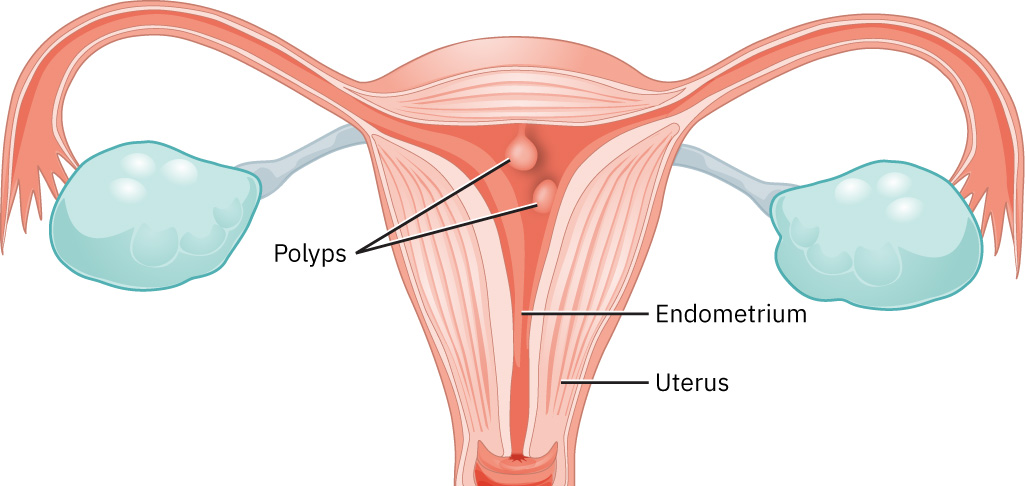18.9 Endometrial Polyps
Endometrial polyps, also known as uterine polyps, are overgrowths of endometrial glands that form a projection from the inner lining of the uterus. See an illustration of uterine polyps in Figure 18.7.[1] If left untreated, endometrial polyps may persist, progress, or resolve. The most common symptom of endometrial polyps is irregular bleeding between menstrual cycles in small amounts that may be described by clients as “spotting.” Endometrial polyps are diagnosed by transvaginal ultrasound or by biopsy.[2]

Medical treatment of polyps is similar to treatment for fibroids and includes hormone medications to induce anovulation and reduce estrogen and progesterone levels or laparoscopic polypectomy (removal of the polyp).[3] Read additional information about treatments in the “Fibroids” section.
- “7124b29d5c2bc6ba08d96d303e32034097b8f059” by Rice University/Open Stax is licensed under CC BY 4.0. https://openstax.org/books/maternal-newborn-nursing/pages/6-3-benign-growths ↵
- Stewart, E. A. (2024). Endometrial polyps. UpToDate. https://www.uptodate.com/contents/endometrial-polyps ↵
- Stewart, E. A. (2024). Endometrial polyps. UpToDate. https://www.uptodate.com/contents/endometrial-polyps ↵
Also known as uterine polyps, are overgrowths of endometrial glands that form a projection from the inner lining of the uterus.
Removal of the polyp.

